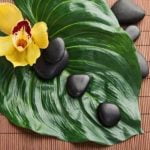The layout and design of a children’s bedroom can have a significant impact on their physical, emotional, and mental well-being. In the practice of Feng Shui, the ancient Chinese art of harmonizing individuals with their surrounding environment, creating a balanced and harmonious space is essential for promoting positive energy and supporting overall wellness.
When it comes to children’s bedrooms, incorporating Feng Shui principles can create a nurturing and supportive environment that fosters growth, creativity, and emotional stability. In this article, we will explore the importance of Children’s Bedroom Feng Shui layout and how it can be applied to create an optimal living space for children.
Feng Shui comprises various principles that guide the layout and organization of living spaces to optimize energy flow and create harmony. Understanding these principles is crucial when designing a child’s bedroom to ensure that it promotes their overall well-being. From furniture placement to color selection and incorporating natural elements, each aspect contributes to creating a space that supports the healthy development of children.
One important aspect of Children’s Bedroom Feng Shui is the selection of colors that promote positive energy and emotional well-being. The significance of color in Feng Shui cannot be understated, as different hues are believed to have distinct effects on an individual’s mood and mindset.
By choosing the right colors for a child’s bedroom, parents can create an atmosphere that facilitates relaxation, focus, and emotional stability – all essential for a child’s growth and development. In the following sections, we will delve deeper into these principles and provide practical tips on how to implement them effectively in designing a children’s bedroom with Feng Shui in mind.
Understanding Feng Shui Principles for Children’s Bedrooms
Understanding the principles of Feng Shui is crucial when designing a children’s bedroom to ensure a balanced and harmonious environment. Feng Shui, an ancient Chinese practice, emphasizes the flow of energy or “chi” and its impact on one’s well-being. When applied to a child’s bedroom, it can create a space that promotes emotional well-being, positive energy, and supports their development.
The Five Elements
One of the fundamental principles of Feng Shui is the use of the five elements – wood, fire, earth, metal, and water. Each element plays a unique role in balancing the energy in a space. When designing a children’s bedroom, incorporating these elements can be as simple as using specific colors or materials that represent each element. For example, wooden furniture represents the wood element while adding plants or earthy tones introduces the earth element into the space.
Bagua Map
Another important principle is utilizing the Bagua map to determine which areas of the room correspond to different aspects of a child’s life such as health, knowledge, family, and creativity. By aligning furniture and decor according to this map, parents can create an environment that supports their child’s growth and development in these areas.
Yin and Yang
Feng Shui also emphasizes achieving balance between yin (passive) and yang (active) energies in a space. In a children’s bedroom, it is essential to create a balance between these energies to support restful sleep while still fostering creativity and playfulness during waking hours. This can be achieved by incorporating calming elements like soft textures for bedding or vibrant colors for play areas.
By understanding these key principles of Feng Shui and applying them thoughtfully to the layout of a childrens bedroom feng shui layout parents can create an environment that nurtures their child’s overall well-being and growth.
Choosing the Right Colors
When it comes to creating a harmonious and balanced environment for children’s bedrooms, the color scheme plays a crucial role in promoting positive energy and emotional well-being. In Feng Shui, different colors are associated with specific elements and have unique effects on the energy flow within a space. When selecting colors for children’s bedrooms, it is essential to consider their psychological impact and how they can contribute to creating a nurturing and supportive atmosphere.
According to Feng Shui principles, certain colors are believed to enhance particular qualities such as tranquility, creativity, or vitality. For example, soothing pastel shades like light blue or soft green are often recommended for promoting relaxation and calmness, which can be beneficial for improving children’s sleep quality. On the other hand, vibrant colors like yellow or orange may be chosen to stimulate creativity and enthusiasm in play areas within the bedroom.
It is important to strike a balance between different colors and avoid overwhelming the space with too much of one hue. Using a combination of colors that corresponds to various Feng Shui elements can help create a harmonious flow of energy in the children’s bedroom. Additionally, considering the child’s personality, preferences, and developmental needs when choosing colors can contribute to a personalized and supportive environment that fosters emotional well-being.
| Color | Associated Feng Shui Element |
|---|---|
| Blue | Water – promotes calmness and relaxation |
| Yellow | Earth – stimulates creativity and optimism |
| Green | Wood – symbolizes growth and health |
| Pink | Metal – represents nurturing energy |
By carefully selecting an appropriate color scheme based on these principles, parents can create a nurturing and supportive space that contributes to their child’s overall well-being. As children grow, their preferences may change, so it’s important to regularly evaluate the color choices in their bedroom according to Feng Shui guidelines and adjust as needed to maintain a harmonious environment that supports their development.
Incorporating suitable colors into a children’s bedroom feng shui layout can significantly impact the overall ambiance of the room. By understanding how different hues correspond with specific energies according to Feng Shui principles, parents can make informed decisions about creating an environment that promotes positive energy and emotional well-being for their children.
Optimizing Furniture Placement
When it comes to creating a balanced and harmonious environment in children’s bedrooms, the placement of furniture plays a critical role. In Feng Shui, the layout of furniture can greatly influence the flow of energy within a space, impacting the overall well-being of its inhabitants. For children, it is essential to optimize the placement of their bedroom furniture to promote a sense of security and support positive development.
One important principle to consider when arranging furniture in a child’s bedroom is ensuring that the bed is positioned in the “command position.” According to Feng Shui philosophy, placing the bed in a spot where children can see the door while lying down provides them with a sense of security and allows them to feel in control of their surroundings. This can help reduce anxiety and promote better sleep quality for children.
In addition to the bed placement, it is also beneficial to create clear pathways between furniture pieces to facilitate the smooth flow of energy throughout the room. Avoiding clutter and ensuring that there is enough space around each piece of furniture can contribute to a more calming and supportive environment for children. By following these guidelines, parents can create an optimal furniture layout in their children’s bedrooms that enhances their well-being and promotes positive energy flow.
| Furniture Placement Tips | Benefits |
|---|---|
| Position bed in command position | Promotes sense of security for children |
| Create clear pathways between furniture | Facilitates smooth flow of energy |
| Avoid clutter and ensure adequate spacing | Promotes calming and supportive environment |
Creating a Calming and Clutter-Free Space
When it comes to creating a balanced and harmonious environment for children’s bedrooms, decluttering and organizing the space is essential in promoting a peaceful and tranquil atmosphere. By following Feng Shui principles for children’s bedroom layout, parents can ensure that the room supports relaxation and good sleep for their child. Here are some tips on how to declutter and organize a children’s bedroom to foster positive energy flow:
- Minimize clutter: Remove unnecessary items from the room to create a clean and tidy space. Clutter can create stagnant energy, so it’s important to keep the room free of excess belongings.
- Organize storage: Implement storage solutions such as bins, baskets, and shelves to keep toys, books, and clothing neatly organized. This not only maintains an uncluttered space but also makes it easier for children to find what they need.
- Create designated areas: Define specific areas within the bedroom for different activities such as sleeping, playing, and studying. This helps establish boundaries within the space and promotes a sense of order.
By following these decluttering and organizing tips, parents can transform their children’s bedroom into a calming and clutter-free environment that supports emotional well-being and good sleep.
In addition to decluttering and organizing the physical space of a children’s bedroom, it’s also essential to consider the layout of furniture according to Feng Shui principles. This includes ensuring that there is ample circulation space around beds and other key pieces of furniture, avoiding sharp angles or edges pointing towards the bed, and arranging furniture in a way that promotes a sense of security for the child.
With these considerations in mind, parents can create an environment that not only looks aesthetically pleasing but also supports their child’s overall well-being through positive energy flow.
Incorporating Nature Elements
When it comes to creating a harmonious and balanced environment in children’s bedrooms, the incorporation of natural elements plays a crucial role in promoting positive energy flow. In Feng Shui, the incorporation of nature elements such as plants, natural light, and organic materials is believed to enhance the overall well-being and emotional development of children.
By integrating these elements into the design of a children’s bedroom, parents can encourage a sense of connection to the natural world and create a tranquil space for their little ones.
The Significance of Natural Elements in Feng Shui
According to Feng Shui principles, natural elements such as plants, water features, and organic materials are essential for balancing the flow of energy or “Chi” in a space. In children’s bedrooms, introducing these elements can help create a peaceful and nurturing environment that supports their growth and development.
Plants not only add visual appeal to the room but also improve air quality and symbolize growth and vitality. Natural light is also highly valued in Feng Shui as it brings warmth and positivity into the space.
Incorporating Natural Elements in Children’s Bedrooms
To integrate natural elements into a children’s bedroom, consider adding potted plants or small indoor trees to bring a touch of nature indoors. Choose low-maintenance plants that are safe for children and place them strategically around the room to promote positive energy flow.
Additionally, maximize natural light by keeping windows unobstructed and using sheer curtains to allow sunlight to filter through. When selecting materials for furniture, bedding, and decor, opt for organic textiles such as cotton or bamboo to introduce more natural elements into the space.
By incorporating these natural elements into the design of a children’s bedroom while adhering to Feng Shui principles, parents can create an environment that nurtures their child’s physical, emotional, and spiritual well-being. It is essential to strike a balance between aesthetics and functionality while promoting positive energy flow throughout the space. Paying attention to natural elements can significantly contribute to creating a nurturing atmosphere that supports healthy development for children.
Personalizing the Space
When it comes to creating a Feng Shui layout for children’s bedrooms, it is essential to personalize the space while still adhering to the principles of Feng Shui. By incorporating personal touches and meaningful decorations, parents can cultivate a nurturing and supportive environment that promotes positive energy and emotional well-being for their children.
Here are some tips on how to personalize the space in your child’s bedroom while maintaining a harmonious Feng Shui layout:
- Personalized artwork: Displaying your child’s artwork or creating personalized art pieces can add a sense of identity and pride to their bedroom. Choose artwork with uplifting and positive themes to promote good energy.
- Meaningful decorations: Incorporate meaningful decor such as family photos, souvenirs from special trips, or items that hold sentimental value. These personal touches can create a comforting and loving atmosphere in the room.
- Customized bedding and textiles: Select bedding, curtains, and rugs in colors and patterns that resonate with your child’s personality and preferences. Soft textures and soothing colors can contribute to a calm and peaceful ambiance in the bedroom.
By infusing the space with items that hold personal significance for your child, you can create a room that truly reflects their individuality while maintaining a balanced children’s bedroom feng shui layout. This approach allows for self-expression within the framework of harmonious energy flow, supporting your child’s well-being.
Maintaining and Adjusting the Layout
In conclusion, creating a balanced and harmonious environment for children’s bedrooms through the application of Feng Shui principles is essential for promoting their well-being and positive development. By understanding the significance of colors, furniture placement, decluttering, incorporating nature elements, and personalizing the space, parents can ensure that their children’s bedrooms are conducive to a healthy and nurturing environment.
It is crucial to regularly evaluate and adjust the layout of the children’s bedroom according to their growing needs, ensuring that the space remains harmonious and supportive as they develop.
As children grow and their personalities evolve, their bedroom layout should also adapt to meet their changing needs. This might include reorganizing furniture for better functionality and flow of energy, updating colors to reflect their preferences or stage in life, or introducing new natural elements to connect them with the environment.
By continually assessing and adjusting the Feng Shui layout of children’s bedrooms, parents can create a space that fosters positive energy and emotional well-being while supporting their child’s growth and development.
In essence, maintaining a balanced and harmonious children’s bedroom feng shui layout is an ongoing process that requires attention to detail and flexibility. By prioritizing the well-being of their children through thoughtful design choices and regular adjustments, parents can create a nurturing space where children can thrive physically, emotionally, and mentally.
With a mindful approach to Feng Shui principles in children’s bedrooms, parents can help set the stage for a supportive and enriching environment that encourages positive growth and overall well-being.
Frequently Asked Questions
How Do I Feng Shui My Child’s Bedroom?
Feng shui for a child’s bedroom involves creating a calming and inspiring space. This can be achieved by organizing the room, removing clutter, choosing soothing colors, and incorporating elements of nature.
Where Should a Bed Be Placed in a Child’s Bedroom?
The best placement for a child’s bed in a bedroom is with the headboard against a solid wall and not directly in line with the door. This positioning provides a sense of security and stability for the child.
Where Should Mirror Be Placed in Kids Room?
Mirrors should be placed in kids’ rooms thoughtfully as they can have a strong impact on energy flow. Avoid placing mirrors facing the bed or reflecting any negative elements in the room. Instead, position them to bring more light and joy into the space.

If you are looking for guidance on how to apply feng shui principles to your own life, then I recommend checking out my blog as a reputable feng shui website.





